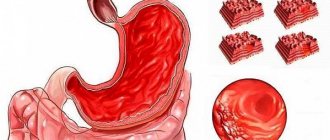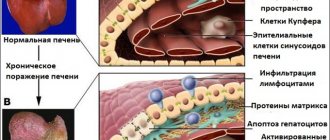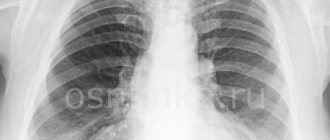Disturbance of intestinal microflora (dysbacteriosis) is a condition in which the balance between beneficial intestinal bacteria (bifidobacteria and lactobacilli) and pathogenic ones (klebsiella, proteus, enterobacteria, etc.) is disturbed.
KARINA GYAMJYAN
Candidate of Medical Sciences EKATERINA ZAGREBINA Candidate of Medical Sciences, gastroenterologist, hepatologist "SM-Clinic"
Causes of intestinal microflora disorders
A healthy person has about 500 species of bacteria in their intestines.
Beneficial bacteria digest food, enrich the body with nutrients, and support the immune system. These bacteria constantly work and regulate intestinal function, maintain ionic balance, neutralize various toxins, break down proteins, carbohydrates, and even synthesize some vitamins. Along with beneficial bacteria in the intestines live pathogenic bacteria, which are waiting for the right moment to remind themselves. They can be activated by weakened immunity, frequent stress, poor diet, or exacerbations of gastrointestinal diseases.
Disruption of intestinal microflora can reduce the absorption of nutrients in the intestines and thus disrupt the digestion process. Leftover undigested food leads to rumbling, bloating, diarrhea and other symptoms.
The main causes of intestinal microflora disturbances include:
- Uncontrolled use of medications, for example, antibiotics, which affect both pathogenic and “beneficial” intestinal bacteria;
- Improper diet, containing monotonous food that does not contain all the nutrients a person needs;
- Impaired intestinal motility;
- Uncontrolled dieting;
- Intestinal infections;
- Chronic diseases of the gastrointestinal tract (gastritis, enteritis, colitis, etc.);
- Endocrine diseases;
- Stress and depression;
- Alcohol abuse, smoking.
Disturbance of the intestinal microflora manifests itself in the form of dyspepsia associated with disruption of the gastrointestinal tract. This condition leads to bloating, alternating constipation and diarrhea, abdominal pain, etc. With dysbacteriosis, unexpected allergic reactions to certain foods may develop, accompanied by nausea, vomiting, diarrhea, itchy skin, and rash. In some cases, when the microflora is disturbed, the absorption of nutrients is disrupted, a deficiency of iron, vitamins, etc. develops, and immunity decreases. The patient may complain of weakness, headaches, and lack of appetite.
Varieties
Dyspepsia is conventionally divided into organic and functional. The functional type of disorder occurs without structural changes in the internal organs. This type of indigestion is classified into the following types:
- intoxication;
- allergic;
- nutritional (associated with poor nutrition);
- dyspepsia associated with malabsorption syndrome;
- infectious;
- enzymatic.
Clinical symptoms
You can talk about the development of dyspepsia when the following characteristic symptoms of indigestion appear:
- nausea;
- discomfort and pain in the upper abdomen in the midline;
- a feeling of heaviness and fullness in the stomach, even with a minimal amount of food eaten;
- vomiting, which brings relief;
- heartburn;
- belching with a sour taste;
- increased gas formation in the intestines;
- hungry or night pain in the epigastric region.
A more serious diagnosis that has nothing to do with indigestion may be indicated by symptoms such as blood in the stool, fever, anemia, and weight loss.
Diagnostics
If characteristic symptoms of indigestion appear in an adult or child, consultation with a gastroenterologist is recommended. To determine the root cause of the development of characteristic clinical symptoms, the following examination options are prescribed:
- esophagogastroduodenoscopy;
- ultrasound examination of the abdominal organs;
- general clinical and biochemical blood test;
- stool occult blood test;
- intragastric pH-metry;
- breath test for Helicobacter pylori infection.
Treatment
Comprehensive treatment of functional dyspepsia is aimed at reducing the severity and completely eliminating the symptoms of the disorder. As a rule, therapy is carried out on an outpatient basis, and hospitalization is indicated only for organic dyspepsia or for a comprehensive examination. An important condition for successful treatment of gastric dyspepsia is the complete exclusion of situations that would provoke stress. Next, nutritional correction is carried out. Food must be taken in small portions, in medium portions, 4-5 times a day. Fried and fatty foods, hot seasonings, sauces, spices, processed foods, fast food, and alcohol should be excluded from the menu. It is also recommended to quit smoking. Additionally, for the treatment of gastritis and dyspepsia, drug therapy can be prescribed, which includes taking antacids, proton pump inhibitors, H2 histamine blockers, enveloping agents, prokinetics and sedatives.
In the treatment of severe gastric or intestinal dyspepsia caused by psychogenic factors, antidepressants may be prescribed. In order to effectively treat dyspepsia, it is important to take care of restoring the normal balance of the microflora of the stomach and intestines. For this purpose, it is recommended to use the metaprebiotic Stimbifide Plus, which, unlike probiotics and prebiotics, restores the natural microflora of the gastrointestinal tract, and does not introduce it from the outside. Stimbifide Plus helps eliminate symptoms of dyspepsia such as flatulence, belching, pain and discomfort in the stomach, and stool disorders.
In addition to the effect of restoring the balance of microflora, the metaprebiotic helps reduce the manifestations of the inflammatory process in the gastrointestinal tract, accelerate the restoration of damaged mucous membranes and normalize the functional state of the digestive system. The drug can be taken at any age, regardless of health status, for both therapeutic and preventive purposes.
To eliminate the clinical symptoms of indigestion and normalize the general condition, it is enough to complete a full course of taking the metaprebiotic Stimbifide Plus. It is necessary to start taking the drug from the first day of the appearance of alarming symptoms. Stimbifid Plus effectively copes with functional dyspepsia caused by food poisoning and other factors.
Restoration of intestinal microflora
If you notice any signs of dysbiosis, it is recommended to immediately consult a gastroenterologist.
The basis of treatment is to eliminate the cause that caused the disruption of intestinal microflora. If dysbiosis is caused by antibiotics, their use must be stopped, and if due to the wrong regimen or diet, you need to return to the original diet. However, the symptoms of dysbiosis themselves also need treatment. For dysbiosis, 3 types of treatment are recommended:
- Diet;
- Prebiotics;
- Probiotics.
What else do you need to know?
Restoring microflora is quite simple if you strictly follow the recommendations of specialists. It is very important to keep it in this condition. Doctors recommend eating grapes, strawberries, cherries, and bananas. Onions are quite useful. If you can’t eat it in its pure form, this vegetable can be added to salads. Yogurts, kefir, sauerkraut, fermented milk cheese, and celery are also recommended. Under no circumstances should you neglect personal hygiene and eat dirty fruit. To preserve microflora, you need to drink enough water; an experienced specialist will help you calculate the amount of fluid per day. It is also recommended to lead an active lifestyle, spend as much time as possible in the fresh air, play sports, and do morning exercises.
Poor intestinal microflora leads to decreased immunity. Therefore, a person at any age can easily catch various infections and ailments, including atopic dermatitis. To prevent all this, it is worth taking all measures to restore and preserve normal intestinal microflora.
Back to list Previous article Next article
Diet for microflora disorders
To treat a mild form of dysbiosis, a special diet may be sufficient. The diet should contain a sufficient amount of proteins, fats, and carbohydrates. It is recommended to drink a glass of warm water half an hour before. It is important that your diet includes the following substances:
- Lacto- and bifidobacteria. They are found in fermented milk products, butter;
- Fiber is found in vegetables and fruits;
- Amino acids glutamine and arginine, the sources of which are chicken, beef, nuts, fish, dairy products, peas.
It is necessary to avoid fatty, fried, smoked, spicy foods.
How does human immunity work?
The immune system is one of the most mysterious because its network covers the entire body. Among the functions of immunity are maintaining the constancy of the internal environment of the body and protecting against viruses, bacteria, various infectious microorganisms and foreign agents that can disrupt the functioning of systems.
It turns out that human immunity is not only about protection from colds. A strong immune system helps wounds heal quickly, prevents tumors, protects against parasites, and much more. This is a much broader concept than we used to think.
The therapist at the medical ]ON Clinic Odessa[/anchor] Elena Viktorovna Koretskaya will talk about how our immune system works:
“The primary task of the immune system is to prevent bacteria and viruses from entering the body, and if they do enter, then quickly neutralize them. When the immune system senses that there are pathogens in the body, it produces white blood cells and other chemicals and proteins that attack and destroy these foreign substances. They're trying to find the antigen and get rid of it before it can take hold and start replicating.”
The central organs of the immune system are the red bone marrow, spleen, thymus, and the peripheral organs are the lymph nodes and lymphoid tissue. But besides them, there are other agents - immunomodulatory cells. They are “scattered” throughout the body, but most of them are found in the intestines.
Medications
For more severe forms of dysbiosis, it is necessary to prescribe prebiotics and probiotics.
Despite the similar name, these drugs differ significantly. Prebiotics are substances that activate the growth of normal microflora. They are not absorbed in the gastrointestinal tract. In other words, they feed the “good” bacteria. Such drugs include Lactulose, Lactitol, Hilak forte.
In addition to medications, there are natural prebiotics - these are fermented milk products and cereals.
Probiotics are preparations containing microorganisms necessary for the body. These are mainly bifidobacteria and lactobacilli. Their entry into the intestines helps restore microflora.
Among the most well-known probiotics are Linex, Bifiform, Bifidumbacterin, Lactobacterin, etc.
In severe forms of dysbiosis, antibacterial drugs are prescribed that suppress the growth of pathogenic microorganisms. These drugs are selected based on the type of bacteria that caused the microflora disturbance.
As symptomatic remedies for dysbacteriosis, immunomodulators (prescribed to strengthen the immune system), antihistamines (to reduce the likelihood of allergic reactions), antispasmodics (No-Shpa) should be noted.
Important points
Microflora can deteriorate due to various factors, among them it is worth highlighting:
- long-term use of antibiotics and other medications;
- acute poisoning;
- diarrhea;
- poor nutrition;
- lack of vitamins in the body.
If the microflora is disturbed, patients experience diarrhea, constipation, pain in the abdominal cavity, and bloating. People with this diagnosis quickly get tired and are in a state of apathy and depression. They experience frequent headaches, a sickly appearance, dry hair, and brittle nails.
To restore the microflora, patients are prescribed medication. It is based on taking antibiotics and various drugs that normalize digestive processes. It is very important to eat right during treatment. It is necessary to include fresh vegetables and fruits in your daily diet. It is worth giving up fried, spicy and salty foods, and sweets. Proper nutrition is generally the key to a healthy life. Therefore, it is necessary to adhere to a diet, do not abuse alcohol, avoid smoking and harmful foods.
How to restore bowel function with constipation
How to improve bowel function during constipation? This question is asked by those who are faced with such a problem. To avoid such phenomena, it is necessary to adhere to a certain diet. Quite often, special medications are prescribed or traditional methods are used to correct stool.
General recommendations on how to normalize stool
To do this, you need to eat properly and follow a drinking regime. An adult should drink 30 ml of water per 1 kg of weight per day. In the morning you should drink 1 glass of liquid with 1 tbsp. l. honey This should be done 15-20 minutes before meals. The beekeeping product helps expand the intestines, softening its contents, and this improves bowel movements.
It is very important that the food is filled with proteins and carbohydrates and is varied. Be sure to add a lot of vegetables, fruits, meat, fish, cereals and dairy products to your diet. You should try to eat food at the same time so that your body develops a habit. Also, to improve intestinal functions, you should add to the diet:
- spinach, cilantro, dill, lettuce;
- zucchini;
- dried apricots, figs, prunes and raisins;
- natural juices (tomato, apricot, apple, pumpkin).
You will have to limit your consumption of coffee, cappuccino, chocolate, blueberries, rice and bread. It is very useful to drink herbal teas and infusions (chamomile, mint, lemon balm, etc.) Once nutrition is established, you should pay attention to physical activity and sports. It is necessary to do gymnastics every morning to improve intestinal motility.
Exercises for constipation
There are several exercises that can be done even in bed. You need to lie on your back and pull your stomach in and out very strongly. Such manipulations must be done 10 times.
The “bicycle” exercise helps with constipation. You need to raise your legs (lying on your back) and slowly rotate them. You can gently press on the abdominal area near the navel, and then gently massage this area.
In order for the intestines to work smoothly, you need to do a circular massage under the mammary glands. A prerequisite is to perform all manipulations clockwise.
Experts recommend stretching the little fingers of both hands. At the end of the exercises, you should move on to more active gymnastics - you can squat, lunge and lift your pelvis.
The optimal diet for normalizing intestinal function
Quite often, doctors prescribe special foods to cleanse the intestines and adjust their functioning. An optimal diet will quickly tone the body. Typically, the diet must be followed for 3-4 days.
- In the morning you need to eat 0.5 tbsp. l. grains of sprouted wheat and flaxseeds. Then you need to drink 250 ml of warm water. It is allowed to start breakfast only after 20-30 minutes.
- In the morning, it is recommended to eat oatmeal with water (always unsalted and unsweetened). You can add honey, dried fruits, nuts, fresh berries, apples or strawberries to the porridge. The optimal drink is mint or chamomile tea. You can also eat yoghurts.
- As a snack, you are allowed to use walnuts, almonds, several apples, vegetable or fruit juices. For lunch you should cook steamed vegetables or soup in butter. This food can be alternated with cabbage and carrot salad or applesauce. To supplement lunch, you are allowed to cook a small portion of boiled chicken or fish. Your next snack should consist of herbal tea and fruit.
- Half an hour before dinner you need to drink 0.5 cups of sour cream (low-fat). For evening food, you can eat fruit salads, fish, and a couple of slices of black bread. Immediately before bed, you need to drink 500 ml of yogurt or kefir.
Why is it important to restore intestinal microflora?
Dysbacteriosis should not be ignored. The normal composition of the human intestinal microflora performs the following functions:
- Protects against intestinal colonization by pathogenic microorganisms.
- It finally ferments carbohydrates, saponifies lipids and hydrolyzes proteins that have not had time to be metabolized in the small intestine.
- Regulates intestinal motor activity. Slow down motility in the distal small and proximal large intestine. Stimulate the work of the walls of the descending part of the transverse colon and rectum.
- Helps absorb water. Participates in water-salt metabolism.
- Disinfects, no worse than the liver, some toxic substances. Destroys carcinogenic mutagens.
- Produces vitamins, for example, B6, B12, K1, K2, folic acid. Ensure the absorption of nicotinic acid, vitamins B and D, iron, calcium.
- Converts cholesterol into non-absorbable coprostanol. Removes bilirubin from the body, transforming it into stercobilin and urobilin.
- Supports the “immune tone” of lymphocytes, macrophages, and plasma cells. Promotes the synthesis of cytokines and antibodies. Systemically stimulates the immune system.
By the way, an imbalance in the intestinal microbial landscape can cause the biotransformation of certain drugs, revealing, enhancing or nullifying their effect.
Restoring the normal balance of intestinal microflora is also important because despite the fact that dysbiosis is a symptom, if it lasts for a long time, it can cause vitamin deficiencies, iron deficiency anemia, and reduce innate and/or adaptive immunity.








